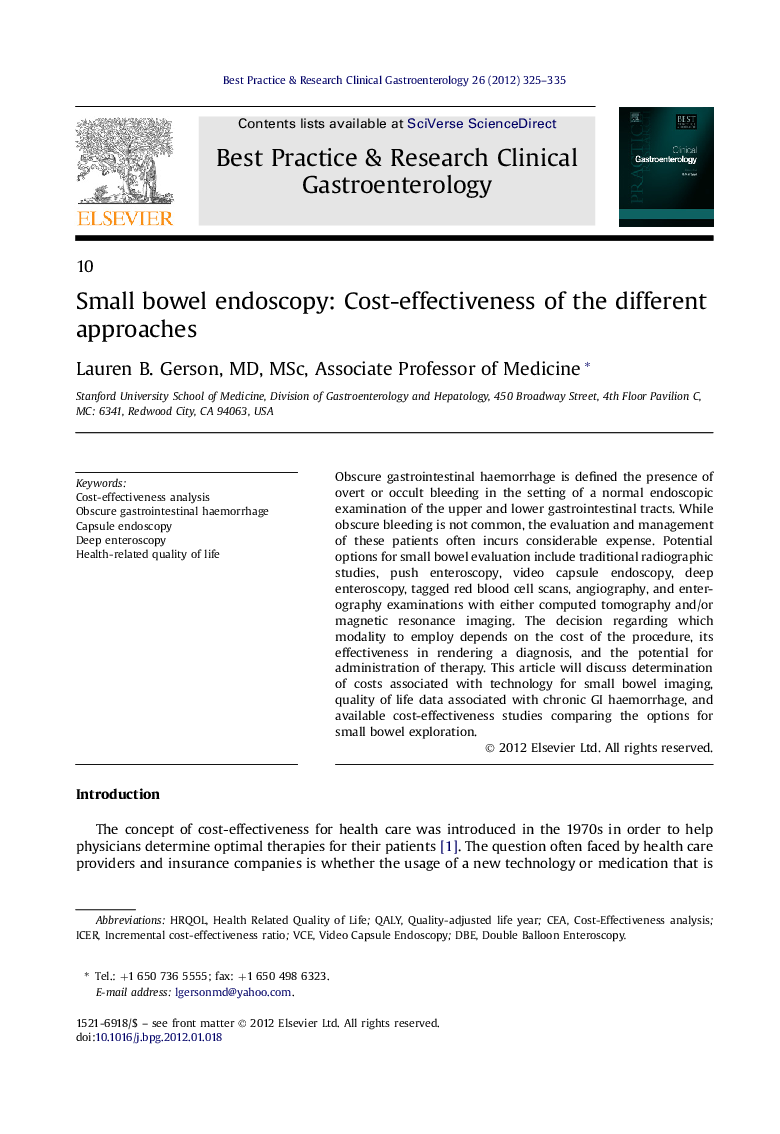| Article ID | Journal | Published Year | Pages | File Type |
|---|---|---|---|---|
| 3254257 | Best Practice & Research Clinical Gastroenterology | 2012 | 11 Pages |
Obscure gastrointestinal haemorrhage is defined the presence of overt or occult bleeding in the setting of a normal endoscopic examination of the upper and lower gastrointestinal tracts. While obscure bleeding is not common, the evaluation and management of these patients often incurs considerable expense. Potential options for small bowel evaluation include traditional radiographic studies, push enteroscopy, video capsule endoscopy, deep enteroscopy, tagged red blood cell scans, angiography, and enterography examinations with either computed tomography and/or magnetic resonance imaging. The decision regarding which modality to employ depends on the cost of the procedure, its effectiveness in rendering a diagnosis, and the potential for administration of therapy. This article will discuss determination of costs associated with technology for small bowel imaging, quality of life data associated with chronic GI haemorrhage, and available cost-effectiveness studies comparing the options for small bowel exploration.
